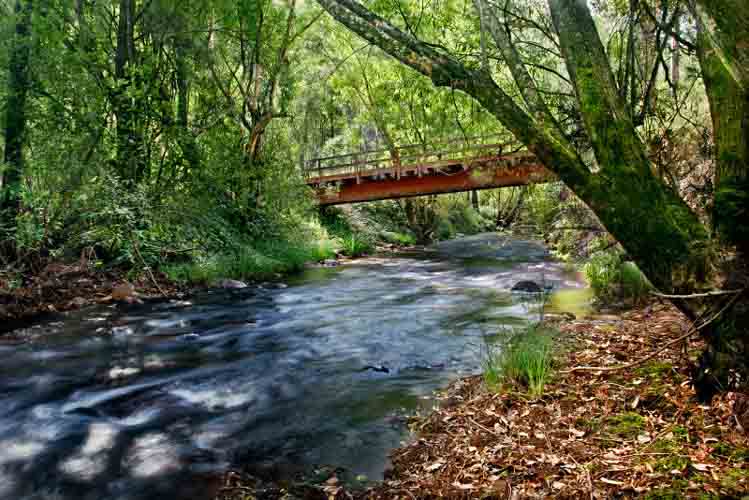
A river is a large natural waterway. The source of a river may be a lake, a spring, or a collection of small streams, known as headwaters. From their source, all rivers flow downhill, typically terminating in the ocean. The mouth, or lower end, of a river is known as its base level.
A river's water is confined to a channel, made up of a stream bed between banks. Most rainfall on land passes through a river on its way to the ocean. Smaller side streams that join a river are tributaries. The scientific term for any flowing natural waterway is a stream; so in technical language, the term river is just a shorthand way to refer to a large stream.
Rivers Wikipedia
Which direction does a river flow?
Rivers begin at their source in higher ground, either rising from a spring, forming from glacial meltwater, flowing from a body of water such as a lake, or simply from damp, boggy places where the soil is waterlogged. They end at their base level where they flow into a larger body of water, the sea, a lake, or as a tributary to another (usually larger) river. In arid areas rivers sometimes end by losing water to evaporation and percolation into dry, porous material such as sand, soil, or pervious rock. The area drained by a river and its tributaries is called its watershed, catchment basin or drainage basin. Watershed is also used however to mean a boundary between drainage basins.
Starting at the mouth of the river and following it upstream as it branches again and again, the resulting river network forms a dendritic (tree-like) structure that is an example of a natural random fractal.
A common misconception, particularly amongst schoolchildren and college students in North America, is that most, or even all, rivers flow from north to south. Rivers in fact flow downhill. Sometimes downhill is from north to south, but equally it can be from south to north, and usually is a complex meandering path involving all directions of the compass.
Rivers flowing downhill, from river source to mouth, do not necessarily take the shortest path. For alluvial streams, straight and braided rivers have very low sinuosity and flow directly down hill, while meandering rivers flow from side to side across a valley. Bedrock rivers typically flow in either a fractal pattern, or a pattern that is determined by weaknesses in the bedrock, such as faults, fractures, or more erodible layers.
Ancient Colorado river flowed backwards PhysOrg - October 4, 2010
Geologists have found evidence that some 55 million years ago a river as big as the modern Colorado flowed through Arizona into Utah in the opposite direction from the present-day river. Writing in the October issue of the journal Geology, they have named this ancient northeastward-flowing river the California River, after its inferred source in the Mojave region of southern California.
Recently, other researchers have speculated that rivers older than the Colorado River may have carved an ancestral or "proto" Grand Canyon around this time, long before Colorado began eroding the present canyon less than 20 million years ago. But Davis sees no evidence of this. "The Grand Canyon would have been on the river's route as it flowed from the Mojave to Utah, he says. "It stands to reason that if there was major erosion of a canyon going on we would see lots of zircon grains from that area, but we don't."
The mighty California River likely met its end as the Rocky Mountains rose and the northern Colorado Plateau tilted, reversing the slope of the land surface and the direction of the river's flow to create the present Colorado-Green River system. Davis and his colleagues have not determined precisely when the change occurred, however. "The river could have persisted for as long as 20 million years before the topography shifted enough to reverse its flow," he says.
Rivers as a Metaphor
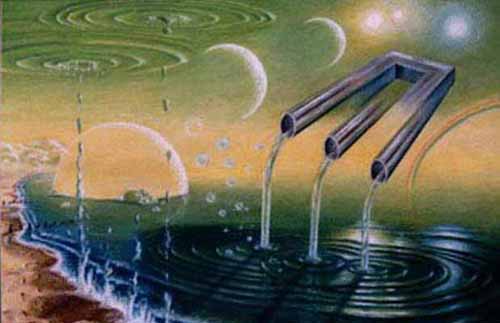
A river never remains the same, so too is the flow of the collective unconscious.
Mythological Rivers
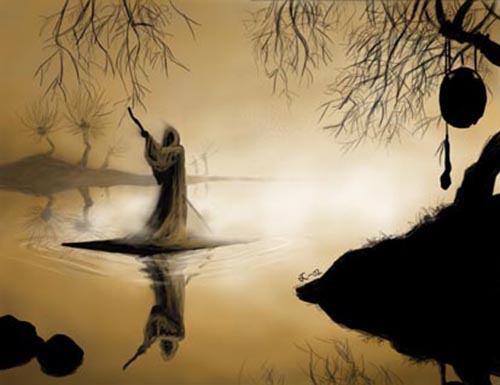
The Styx - also meaning "hate" and "detestation" - is a river in Greek mythology that formed the boundary between Earth and the Underworld (often called Hades which is also the name of this domain's ruler). The rivers Styx, Phlegethon, Acheron, and Cocytus all converge at the center of the underworld on a great marsh, which is also sometimes called the Styx. The important rivers of the underworld are Lethe, Eridanos, and Alpheus.
The gods were bound by the Styx and swore oaths on it. The reason for this is during the Titan war the goddess Styx, the goddess of the river Styx, sided with Zeus. After the war, Zeus promised every oath be sworn upon her. Zeus swore to give Semele whatever she wanted and was then obliged to follow through when he realized to his horror that her request would lead to her death. Helios similarly promised his son Phaeton whatever he desired, also resulting in the boy's death. According to some versions, Styx had miraculous powers and could make someone invulnerable. According to one tradition, Achilles was dipped in it in his childhood, acquiring invulnerability, with exception of his heel, by which his mother held him. This is the source of the expression Achilles' heel, a metaphor for a vulnerable spot.
Styx was primarily a feature in the afterworld of Greek mythology, and similar to the Christian area of Hell in texts such as The Divine Comedy and "Paradise Lost". The ferryman Charon is believed to have transported the souls of the newly dead across this river into the underworld, though in the original Greek and Roman sources, as well as in Dante, it was the river Acheron that Charon plied. Dante put Phlegyas over the Styx and made it the fifth circle of Hell, where the wrathful and sullen are punished by being drowned in the muddy waters for eternity, with the wrathful fighting each other.
In ancient times some believed that placing a coin in the mouth[2] of the deceased would help pay the toll for the ferry to help cross the Styx river which would lead one to the entrance of the underworld. If some could not pay the fee it was said that they would never be able to cross the river. This ritual was performed by the relatives.
The variant spelling Stix was sometimes used in translations of Classical Greek before the 20th century. By synecdoche, the adjective stygian came to refer to anything dark, dismal, and murky.
The Celadon is a mythological river of Arcadia crossed by Heracles in pursuit of the Hind of Ceryneia, according to Pindar: it is mentioned by Strabo. Pausanias names it the Celadus and states that it is a tributary of the Alpheus. In Homer's Iliad it is described as being under the walls of Pheia, not far from the river Iardanus, on the borders of Pylos: Ereuthalion was killed by Nestor here.
Eridanos is a river mentioned in Greek mythology. Virgil considered it one of the rivers of Hades in his Aeneid VI, 659.
Hesiod, in the Theogony, calls it "deep-eddying Eridanos" in his list of rivers, the offspring of Tethys. Herodotus (III, 115) points out that the word Eridanos is essentially Greek in character, and surmises that consequently the river supposed to run around the world is probably a Greek invention. He associated it with the river Po, because the Po was located near the end of the Amber Trail. According to Apollonius of Rhode and Ovid, amber originated from the tears of the Heliades, encased in poplars as dryads, shed when their brother, Phaeton, died and fell from the sky, struck by Zeus' thunderbolt, and tumbled into the Eridanos, where "to this very day the marsh exhales a heavy vapor which rises from his smouldering wound; no bird can stretch out its fragile wings to fly over that water, but in mid-flight it falls dead in the flames;" "along the green banks of the river Eridanos," Cygnus mourned him - Ovid told - and was transformed into a swan. There in the far west, Heracles asked the river nymphs of Eridanos to help him locate the Garden of the Hesperides.
Eridanos is the name that has been applied by geologists to a river which flowed where the Baltic Sea is now, a river system also known simply as the "Baltic River System".
The Sarasvati River is one of the chief Rigvedic rivers mentioned in ancient Sanskrit texts. The Nadistuti hymn in the Rigveda (10.75) mentions the Sarasvati between the Yamuna in the east and the Sutlej in the west, and later Vedic texts like Tandya and Jaiminiya Brahmanas as well as the Mahabharata mention that the Sarasvati dried up in a desert. The goddess Sarasvati was originally a personification of this river, but later developed an independent identity and gained meaning.
The identification of the Vedic Sarasvati River with the Ghaggar-Hakra River was accepted by Christian Lassen, Max Muller, Marc Aurel Stein, C.F. Oldham and Jane Macintosh, while some Vedic scholars (e.g. Kochhar 1999) believe the Helmand River of southern Afghanistan corresponds to the Sarasvati River.
Other famous Mythological Rivers Wikipedia
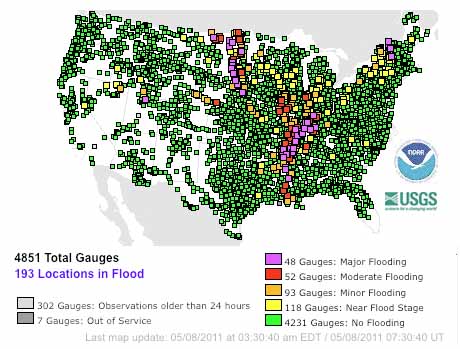
2011 Mississippi River Floods and Prophecy

Yangtze river turns red September 7, 2012
Science, Prophecy, Alchemy
Articles in the News ...
World's rivers running on empty, paper finds PhysOrg - November 26, 2012
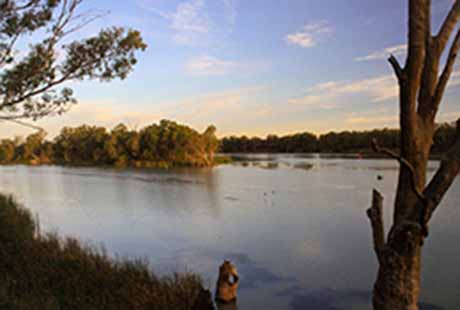
Four of the world's great rivers - the US Colorado River, the South African Orange River, the Chinese Yellow River and the Murray are all suffering from drastically reduced flows as a direct result of water extraction, according to new ANU research. The researchers found that in all four basins, over a long period of time, outflows have greatly reduced as a direct result of increased water extractions, and that urgent changes in governance of water are needed to ensure the systems remain healthy and viable. The key to securing the future of the world's rivers lies in plans to share water use between users and the environment, and water markets to manage allocations.
Underground River Discovered Beneath Amazon Live Science - September 1, 2011

An underground river has now been discovered beneath the mighty Amazon River, flowing miles below the surface. Scientists detected this river after they analyzed data from 241 wells that Brazilian oil company Petrobras drilled in the Amazon region in the 1970s and 1980s. The river was unofficially named the Hamza by scientists at Brazil's National Observatory in honor of their colleague, geophysicist Valiya Hamza.
Mysterious Ancient Rock Carvings Found Near Nile Live Science - May 14, 2011
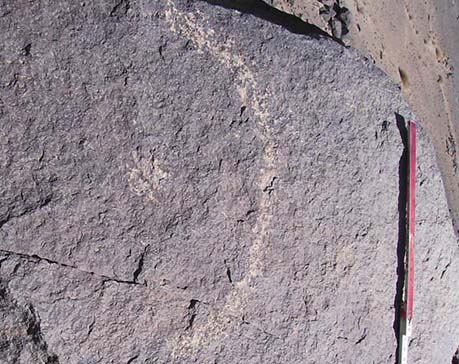
An archaeological team in the Bayuda Desert in northern Sudan has discovered dozens of new rock art drawings, some of which were etched more than 5,000 years ago and reveal scenes that scientists can't explain. The team discovered 15 new rock art sites in an arid valley known as Wadi Abu Dom, some 18 miles (29 kilometers) from the Nile River. It's an arid valley that flows with water only during rainy periods. Many of the drawings were carved into the rock faces - no paint was used - of small stream beds known as "khors" that flow into the valley. They found a mysterious, set of rock art appears to be at least 5,000 years old and shows a mix of geometric designs. The "oldest rock art we found are the spiral motifs," said Karberg, which, as their name suggests, twist up in a way that is hard to interpret. Similar drawings have been found in the Sahara Desert. They were created at a time when Africa was a wetter place, with grasslands and savannah dominating Sudan; people were moving to a lifestyle based on animal husbandry and, in some instances, farming.
Dying Stars to Collide and Create Stellar Baby Live Science - May 14, 2011
The collision of two dying stars can create a living one, scientists say. Scientists have discovered a binary system of two dying stars, known as white dwarfs, set to collide and give birth to a new, living star. Our sun - and indeed, more than 90 percent of all stars in our galaxy - will one day end up as white dwarf stars, which are made up of dim, fading stellar cores where nuclear fusion has stopped. These cooling embers, which make up about 10 percent of all stars in our galaxy, are typically about 40 to 90 percent of the mass of our sun but pack that all into an Earth-sized ball.
Undersea river discovered flowing on sea bed Telegraph.co.uk - August 1, 2010
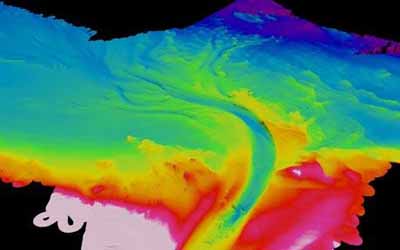
Massive underwater rivers that flow along the bottom of the oceans have been discovered by scientists. If found on land, scientists estimate it would be the world's sixth largest river in terms of the amount of water flowing through it.
Amazon Losing "Flying Rivers," Ability to Curb Warming National Geographic - December 19, 2009
The Amazon's "flying rivers" - humid air currents that deliver water to the vast rain forest - may be ebbing, which could have dire consequences for the region's ability to help curb global warming, an expert said this week at the Copenhagen climate conference.
Rising temperatures in the Amazon region, in large part due to climate change, are creating more arid savannas, which disrupt the water cycle vital to Brazil's farming and energy industries.
Britain cut off from Europe by 'super-river' as little as 30,000 years ago Telegraph.co.uk - November 30, 2009
A prehistoric "super river" periodically cut Britain off from France thousands of years before the formation of the English Channel, scientists have established. Researchers have found sediment on the ocean floor off France which originated in the north of the channel which must have been transported by the river originally fed by the Thames and the Rhine.
Amazon River Is 11 Million Years Old, Drilling Study Finds Science Daily - July 8, 2009
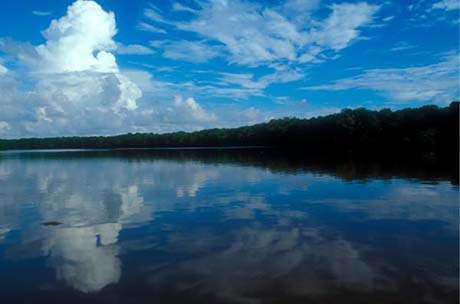
The Amazon River originated as a transcontinental river around 11 million years ago and took its present shape approximately 2.4 million years ago. These are the most significant results of a study on two boreholes drilled in proximity of the mouth of the Amazon River by Petrobras, the national oil company of Brazil.
Amazon Longer Than Nile River, Scientists Say National Geographic - June 18, 2007
The Amazon River, not the Nile, is the longest in the world, a team of Brazilian scientists claims. The scientists claim to have traced the river's source to a snow-capped mountain in southern Peru, adding a new twist in the swirling debate over the longest river label.
World's Longest Underground River Discovered in Mexico, Divers Say National Geographic - March 6, 2007
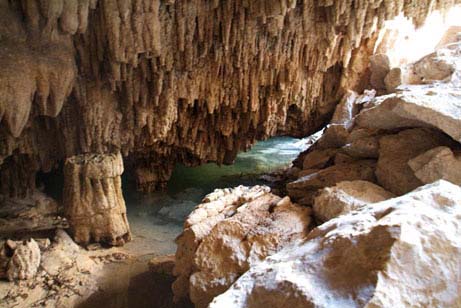
Divers exploring a maze of underwater caves on Mexico's Yucat‡n Peninsula have identified what may be the longest underground river in the world. The waterway twists and turns for 95 miles (153 kilometers) through the region's limestone caverns, said British diver Stephen Bogaerts, who made the discovery with German colleague Robbie Schmittner.
Scientists Study Mysterious Stop-Start River KLS.com - November 21, 2006
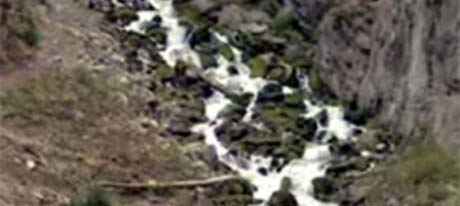
Imagine a pristine mountain stream that turns on and off every few minutes, all by itself. Believe it or not, there is such a Mystery River one of only two in the entire world. Now, University of Utah scientists have new evidence that may explain how the phenomenon works. It's not a big river. It's an icy mountain stream. But a few minutes later, it's gone. And a few minutes after that, it's back.
It's not a geyser; it's fed by a cold-water spring.
In fall and winter it has a natural cycle, about 20 minutes on, 20 minutes off. The only other spring like it in the world is in France. It's a point of pride in nearby Afton, Wyoming. Just before it erupts, the spring emits a deep gurgling noise. A rising puddle quickly becomes a surprisingly vigorous roaring creek. In late summer, scientists collected water samples. They're exploring an old theory involving a mysterious underground chamber. As groundwater flows continuously into a cavern, it fills a narrow tube that leads out. As it pours over the high point of the tube, it creates a siphon effect, sucking water out of the chamber. Eventually air rushes in and breaks the siphon.
Amazon river 'switched direction' BBC - October 24, 2006
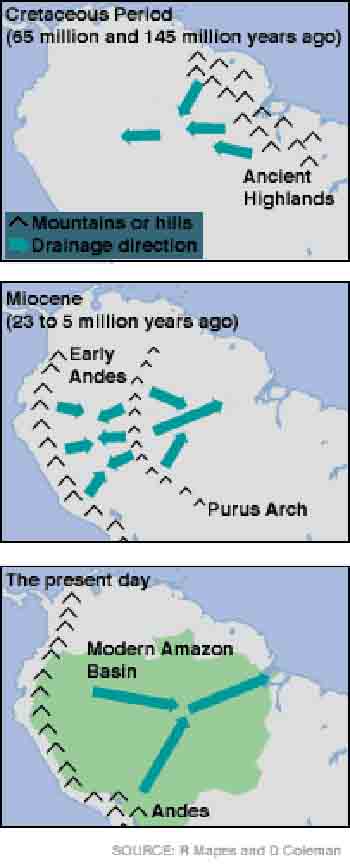
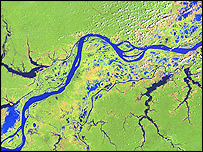
Over millions of years, the Amazon has reversed its flow. The world's largest river, the Amazon, once flowed from the Atlantic Ocean to the Pacific - the opposite of its present direction, a study shows. Sedimentary rocks in the central part of South America contain ancient mineral grains that must have come from the eastern part of the continent. Geologist Russell Mapes says this must mean that about 145-65 million years ago, the Amazon flowed east to west. The age of rocks on the South American continent differs between east and west. Rocks as old as 2.5 billion years are found on the eastern side of the continent. Because of continual geological activity in the Andes, on the western side, rocks there are much younger.....